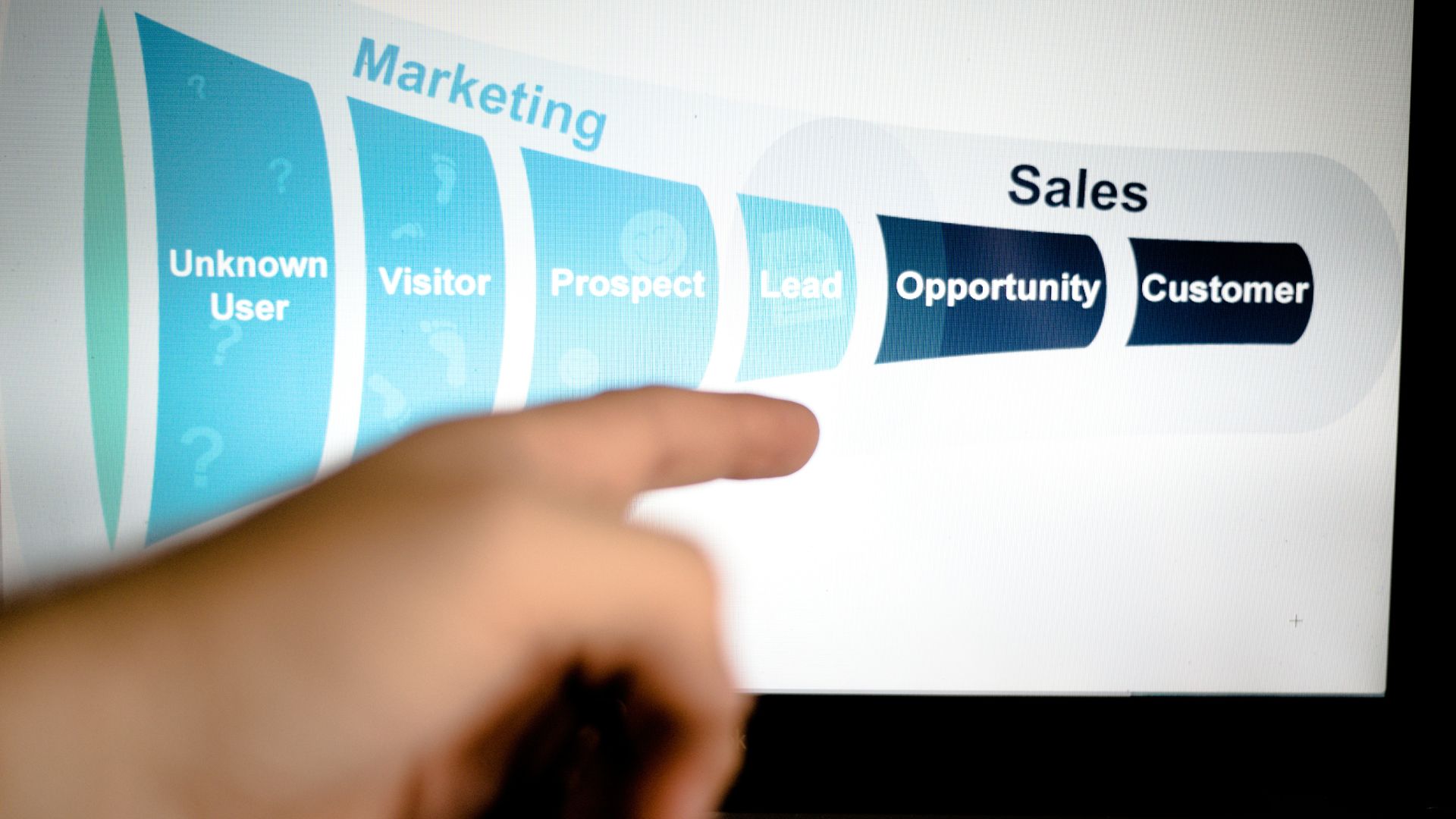Navigating the Sales Funnel: A Guide for Entrepreneurs
Navigating the Sales Funnel: A Guide for Entrepreneurs
As we get into sales funnels, imagine you’re at a bustling marketplace, vendors everywhere selling everything under the sun. 🌞
You spot an intriguing booth from afar, moving closer to see what’s on offer.
That’s when your journey through their sales funnel begins.
You become one of many potential customers drawn into this vibrant shopfront – but how do they turn these casual browsers into buyers?
How does this simple store convert passing Interest into solid sales?
This isn’t just about marketplaces and physical businesses; it applies to every business trying to win over customers in today’s digital age.
Whether buying shoes online or choosing software for our startup, we all go through different decision-making stages before clicking that ‘Buy Now’ button.
So, the secret’s all about making the most of your sales funnel.
Ready to dive in together?
Let’s do this! 🚀
Table Of Contents:
- Navigating the Sales Funnel: A Guide for Entrepreneurs
- Understanding the Sales Funnel
- FAQs in Relation to Sales Funnel
- Conclusion
- Navigating the Sales Funnel: A Guide for Entrepreneurs
- Understanding the Sales Funnel
- The Importance of Sales Funnels in Marketing
- Implementing an Effective Sales Funnel Strategy
- The Different Stages of a Sales Funnel
- Tools and Technologies for Sales Funnel Management
- Best Practices for Sales Funnel Optimization
- The Evolution of Sales Funnels in the Digital Age
- FAQs in Relation to Sales Funnel
- Conclusion
Understanding the Sales Funnel
 A sales funnel is an essential element of a business’s promotional plan and isn’t as difficult to comprehend as it may appear. Let me break down its essence for you: It’s all about guiding potential customers from the first Awareness of your product to the final purchase.
A sales funnel is an essential element of a business’s promotional plan and isn’t as difficult to comprehend as it may appear. Let me break down its essence for you: It’s all about guiding potential customers from the first Awareness of your product to the final purchase.
The concept of a sales process can be traced back to Elmo Lewis in 1898. Despite its antiquity, this approach is still applicable today due to the proliferation of online companies.
The Evolution of the Sales Funnel

Let’s take a walk down memory lane.
The traditional sales funnel was simple – Awareness at the top, followed by Interest, the Decision-making stage, and Action (AIDA).
A prospective customer would enter at ‘Awareness’ and hopefully exit after taking some form of action, such as making a purchase or signing up for an email list. In recent years, we’ve seen changes mainly driven by technological advancements that have reshaped consumer behavior.
For instance, social media platforms are now integral to nurturing leads through tailored content based on users’ preferences – giving them unique benefits that align with their pain points. We also live in an era where customers create significant influence through reviews or recommendations – they’re no longer passive participants but active contributors to our business landscape.
And trust me when I say this isn’t just another fancy jargon thrown around – data is backing up these claims.
- Awareness: This is where potential customers know they have specific needs or problems.
- Interest: Here, prospects begin researching how your products could meet those needs or solve those problems.
- Decision: At this stage, prospects compare different solutions available in the market and decide which is best for them.
- Action: This is where your leads decide to purchase your product or service.
A sales funnel lets us get a better grip on how customers act. Say you see that.
The Importance of Sales Funnels in Marketing
Why should businesses give so much importance to sales funnels? The answer is simple: a well-structured sales funnel can generate leads like bees to honey and turn potential customers into loyal clients.
Think of it as the map guiding your prospective customer’s buying journey. Without a process for tracking and guiding customers, your business may have an outstanding product or service, but you’re essentially shooting in the dark. It’s not just about getting people in the door; it’s also about keeping them engaged with what you have to offer. Sales funnels help model closing deals and predict future sales. In other words, if we were talking sports terms here – it would be akin to having an effective game plan before hitting the field. Let’s delve deeper into this concept.
Awareness Stage: Making Potential Customers Aware
This is where users first sign up or download free resources from your website – making them aware of your offerings. For instance, if someone stumbles upon one of our webinars via Google search results while looking for online business-building training material – that’s Awareness.
Interest Stage: Nurturing Leads
You’ve grabbed their attention with lead magnets (think e-books or newsletters). Now what? Now comes nurturing those leads by providing relevant messaging regularly through email drip campaigns, keeping them engaged and interested.
Decision-Making Stage: Trial Offers & Demos
To help prospects make their final decision towards becoming paying customers – offering things like demos or trial periods helps significantly at this stage by letting them experience the unique benefits of your product or service.
Action Stage: Conversion
And voila. The process ends with a purchase – turning prospects into customers. This is where they decide to buy, making that leap from potential customer to actual client. Sales funnels are like a treasure map for businesses. They guide potential customers on their trip, from looking around to becoming faithful clients. These funnels let companies see and tackle customer issues at each step.
Implementing an Effective Sales Funnel Strategy
Your sales funnel strategy is the key to converting casual visitors into loyal customers. A well-implemented strategy can help you capture email addresses, use social media effectively, and apply social proof in your marketing efforts. The first step towards building a robust sales funnel involves creating an irresistible lead magnet encouraging users to provide their email addresses. This could be anything from a free eBook or a special discount on their first purchase. You’re essentially trading something of value for a potential customer’s contact information. Now, let’s get practical. It all starts with building a landing page. Why? Well, it’s like setting up shop at the busiest downtown intersection – everybody who passes by can see what you offer.
Email Nurturing: The Heartbeat of Your Sales Funnel
You’ve got those precious email addresses – now, what do you do with them? That’s where email nurturing comes into play. Email drip campaigns are one effective method of nurturing leads and guiding them through your sales process. An email drip campaign, like water nourishing plants drop-by-drop over time, delivers bite-sized pieces of valuable content directly to prospects’ inboxes over several days or weeks. These emails work hard behind the scenes, warming up leads until they’re ready for that final decision stage. Lead scoring, another vital part of this strategy helps identify when these warmed-up prospects become hot enough (qualified) and ready for direct contact from your sales team.
In our digitally-connected world, a solid social media presence isn’t optional. Social media offers you a chance to relate with potential customers intimately and demonstrate your exclusive advantages in an enjoyable, captivating manner. Remember this – people trust other people. That’s why using social proof is so effective in convincing prospects about your product or service’s value. Encourage current customers to share their positive experiences online for prospective customers to see.
The Power of Offering Value Upfront
Let’s win over your audience by giving them something valuable first. By providing something of worth right off the bat, we can gain the trust and respect of our listeners immediately.
The Different Stages of a Sales Funnel
Every successful sales process has one thing in common – an effective sales funnel. This isn’t some mystical concept but a tried-and-true method businesses use to guide prospective customers from Awareness to action. Let’s take a closer look at the four main stages of this process: Awareness, Interest, Decision, and Action. But first things first, what exactly is a sales funnel?
Awareness Stage
This is where your potential customer becomes aware they have a problem or need that requires solving. During this stage, you want them to find your business through channels like Google search or social media posts. You can create content around relevant topics or offer free resources such as e-books (lead magnets), which users can download for free. In return, you get their email address and start nurturing leads into becoming paying customers.
Interest Stage
In the interest stage, prospective customers begin searching for solutions and are actively considering different options available in the market – including yours. Your job here? Ensure your offering stands out by highlighting its unique benefits and how it solves pain points better than competitors. You may also offer a free trial period so prospects can test-drive before making any final decision.
Decision Stage
We’ve now arrived at the crucial decision-making stage. Prospects have gathered enough information about various products/services but haven’t decided who should get their hard-earned money. Demos, testimonials, case studies – these are some of the powerful tools you can use to nudge them in your direction. A competent sales squad can be the determining factor in a successful outcome.
Action Stage
The final stage – action. Here’s when prospects turn into paying customers. They’ve decided your solution fits their needs and are ready to part with their cash. Make sure your checkout process is a breeze to make the switch easier.
Tools and Technologies for Sales Funnel Management
 The art of sales funnel management is a bit like being an orchestra conductor. You ensure each instrument (or tool) plays its part at the right time, resulting in a harmonious symphony lead nurturing and conversion. So, what are these magical instruments? Let’s investigate some innovative techniques to offer your business the needed edge.
The art of sales funnel management is a bit like being an orchestra conductor. You ensure each instrument (or tool) plays its part at the right time, resulting in a harmonious symphony lead nurturing and conversion. So, what are these magical instruments? Let’s investigate some innovative techniques to offer your business the needed edge.
Email Drip Campaign Software
An email drip campaign works like water on stone – gentle but persistent. The aim is to stay top-of-mind with potential customers without overwhelming them. To orchestrate this delicate balance, you need robust management software. This allows you to automate sending targeted emails over a period based on specific triggers or user actions. A strategically timed email can turn prospects into paying customers, nudging them gently through each stage of the buyer’s journey. Besides keeping your brand front-and-center, these campaigns also play an important role in upselling existing clients – because who said music has to stop after one song?
Customer Relationship Management (CRM)
 A CRM system is much more than just an address book; it’s like having sheet music for every member of your audience. It helps keep track of contact details and interactions, preferences, and history with your company. So when they’re ready to decide to buy from you, bam. Your perfectly tuned melody hits all the right notes.
A CRM system is much more than just an address book; it’s like having sheet music for every member of your audience. It helps keep track of contact details and interactions, preferences, and history with your company. So when they’re ready to decide to buy from you, bam. Your perfectly tuned melody hits all the right notes.
- Capturing Information: A good CRM will help capture crucial customer information, which aids segmentation for future marketing strategies.
- Nurturing Leads: With a CRM, you can nurture leads more effectively by understanding their unique benefits and pain points.
- Sales Team Collaboration: A unified view of customer interactions enables your sales team to understand the process better and helps them collaborate seamlessly.
Imagine if Elmo Lewis, the trailblazer behind the classic sales funnel idea, were here today. He’d likely be a massive fan of CRMs. He would love how they seamlessly guide customers through their buying journey.


